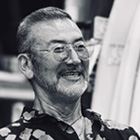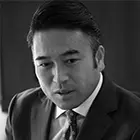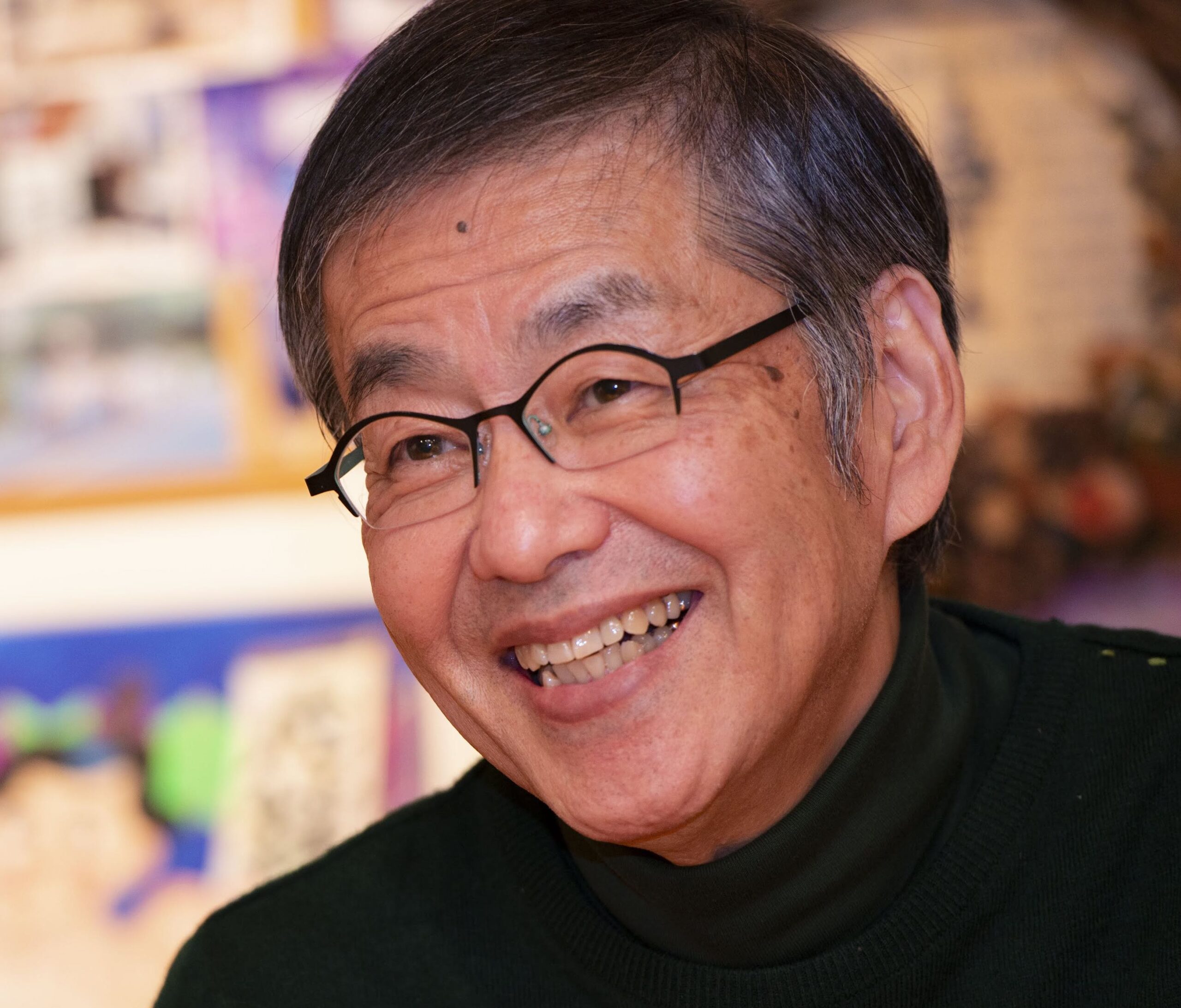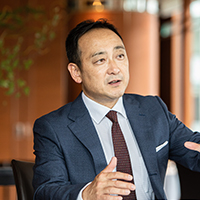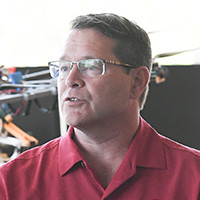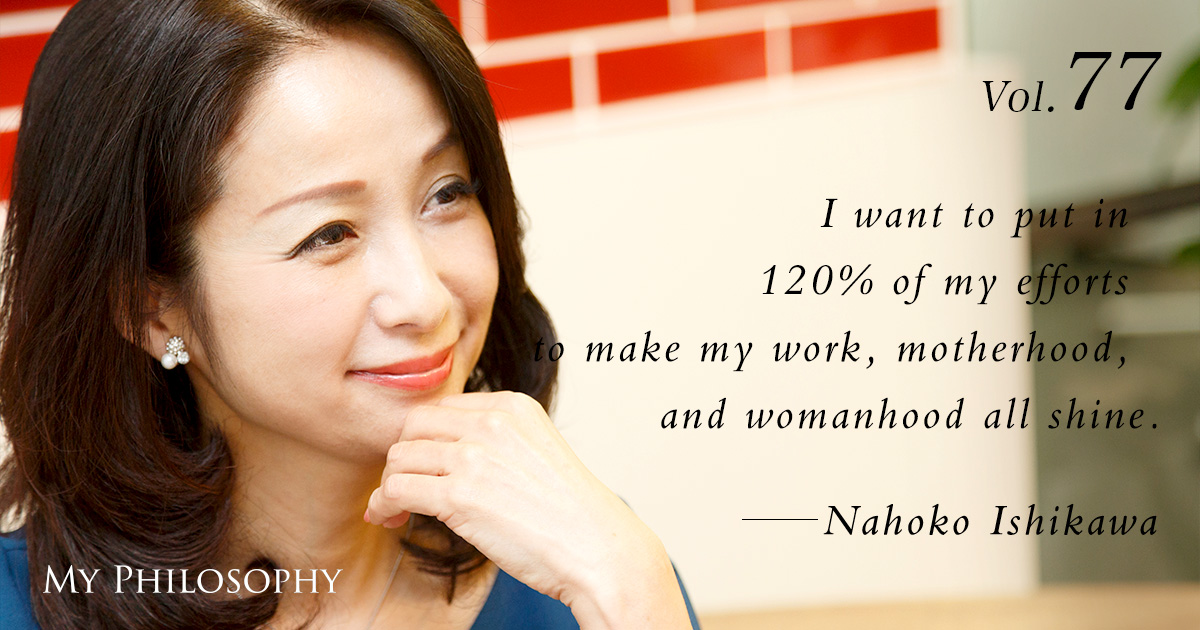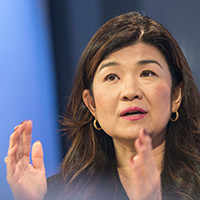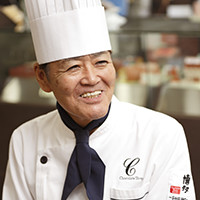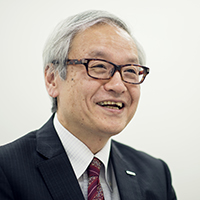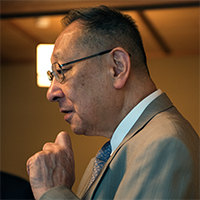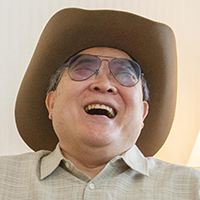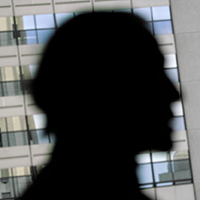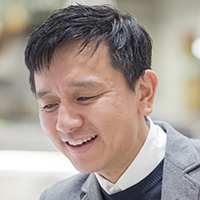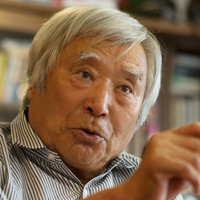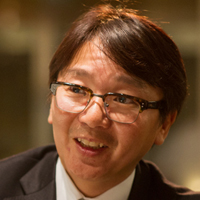
In an interview with Kengo Kuma, he shares a remarkable journey that seems almost destined. Inspired to pursue architecture after witnessing the first Tokyo Olympics, Kuma found himself directly involved in the architecture of the second Tokyo Olympics as an architect. Describing this as a "mysterious coincidence" and "fate," we delved into his commitment to architecture.
Profile
Vol.56 Kengo Kuma
Architect
Born in Kanagawa Prefecture in 1954, Kengo Kuma completed his postgraduate studies in architecture at the University of Tokyo in 1979. Following a stint as a visiting researcher at Columbia University, he became a professor at Keio University in 2001 and a professor at the University of Tokyo in 2009. His notable achievements include receiving the Architectural Institute of Japan Award in 1997 for the "Mori Stage/Toyomamachi Noh stage in the forest" and the Benedictus Award from the American Institute of Architects for "Water/Glass" in the same year. In 2002, he was honored with the International Spirit of Nature Wood Architecture Award from Finland for his work, including the "Nakagawa-machi Bato Hiroshige Museum of Art." He received the Mainichi Art Award in 2010 for the Nezu Museum. His major works include the Suntory Museum of Art, Nezu Museum, the University of Tokyo Graduate School of Information Science and Technology Daiwa Ubiquitous Computing Research Building, and the Starbucks Coffee Dazaifu Tenmangu Omotesando Store, among others.
His publications include "Shizen na Kenchiku (Natural Architecture)" (Iwanami Shinsho), "Makeru Kenchiku (Defeated Architecture)" (Iwanami Shoten), and "Shin-Toshiron Tokyo (New Urban Theory TOKYO)" (Shueisha Shinsho), among others.
*Please note that titles and affiliations are as of June 2017, the time of the interview.
The Metabolism Generated by a “Field-First Approach”
 I recall the vivid memory of when, at the age of 10 during the first Tokyo Olympics in 1964, I entered the pool at the Yoyogi National Stadium (Yoyogi 1st Gymnasium), an iconic Olympic venue. The sight of light shimmering down from the heavens, reflecting off the water’s surface, was incredibly beautiful. This striking impression sparked my ambition to become an architect. More than half a century later, as the second Tokyo Olympics were held, I could never have imagined I would be involved as an architect. Coincidentally, the 2020 Tokyo Olympics and Paralympics marked the 30th anniversary of the establishment of “KENGO KUMA AND ASSOCIATES.” Through the decades, I emphasize the necessity of constant renewal to sustain my practice. I believe in not placing a mediator, such as a foreman, between myself and the young energy of the team, insisting on direct communication with all project members. According to him, bypassing this direct engagement would compromise the quality of the work produced.
There are architects who delegate site responsibilities to juniors while they stay away, but I think architecture needs a “texture” that reflects the inherent quality of the location, which directly contributes to the comfort of those who live there. This “texture” can only be understood by being physically present at the site. I resonate He resonate with Kenji Miyazawa’s poem “Be not Defeated by the Rain” where the act of “going” to care for others is central. For me, it’s the act of “going and seeing” that uncovers what cannot be understood or accomplished otherwise.
I recall the vivid memory of when, at the age of 10 during the first Tokyo Olympics in 1964, I entered the pool at the Yoyogi National Stadium (Yoyogi 1st Gymnasium), an iconic Olympic venue. The sight of light shimmering down from the heavens, reflecting off the water’s surface, was incredibly beautiful. This striking impression sparked my ambition to become an architect. More than half a century later, as the second Tokyo Olympics were held, I could never have imagined I would be involved as an architect. Coincidentally, the 2020 Tokyo Olympics and Paralympics marked the 30th anniversary of the establishment of “KENGO KUMA AND ASSOCIATES.” Through the decades, I emphasize the necessity of constant renewal to sustain my practice. I believe in not placing a mediator, such as a foreman, between myself and the young energy of the team, insisting on direct communication with all project members. According to him, bypassing this direct engagement would compromise the quality of the work produced.
There are architects who delegate site responsibilities to juniors while they stay away, but I think architecture needs a “texture” that reflects the inherent quality of the location, which directly contributes to the comfort of those who live there. This “texture” can only be understood by being physically present at the site. I resonate He resonate with Kenji Miyazawa’s poem “Be not Defeated by the Rain” where the act of “going” to care for others is central. For me, it’s the act of “going and seeing” that uncovers what cannot be understood or accomplished otherwise.
Creation Born from “Cultural and Value Differences”
 I hope to cultivate a culture that finds joy in hands-on creativity, emphasizing the significance of incorporating diverse cultural perspectives. Since around 2000, KENGO KUMA AND ASSOCIATES has increasingly hired foreign nationals, prioritizing individuals with interesting backgrounds, such as a staff member from Sweden who was a former supermodel. I believe that a team composed of various cultures enhances creativity, often providing valuable insights arising from their differences.
I strongly recommend young people to travel, to explore the architecture of the world with friends, engaging in debates over their differing tastes and preferences. Such journeys lead to new discoveries, perhaps finding interest in aspects previously overlooked. I believe that flipping through magazines or browsing photos and videos online is insufficient; one must physically visit these places. My own experiences traveling with peers, engaging in heated debates, have become integral to who I am today, enriching my work and perspective.
I hope to cultivate a culture that finds joy in hands-on creativity, emphasizing the significance of incorporating diverse cultural perspectives. Since around 2000, KENGO KUMA AND ASSOCIATES has increasingly hired foreign nationals, prioritizing individuals with interesting backgrounds, such as a staff member from Sweden who was a former supermodel. I believe that a team composed of various cultures enhances creativity, often providing valuable insights arising from their differences.
I strongly recommend young people to travel, to explore the architecture of the world with friends, engaging in debates over their differing tastes and preferences. Such journeys lead to new discoveries, perhaps finding interest in aspects previously overlooked. I believe that flipping through magazines or browsing photos and videos online is insufficient; one must physically visit these places. My own experiences traveling with peers, engaging in heated debates, have become integral to who I am today, enriching my work and perspective.
Creating Intriguing Architecture Through “Relaxation”
 Even as an architect, I continue to travel the world for work, seizing every opportunity to explore architecture. I’ve become a master of travel, proudly boasting the ability to embark on global journeys with just a shoulder bag, no suitcase needed even for trips exceeding two weeks. This minimalist approach requires savvy, especially when traversing both hemispheres and encountering varying seasons. Through experience, I’ve learned to pack the essentials in a shoulder bag, ready to travel at a moment’s notice.
I believe being lightweight is akin to easing up, which contrasts with the perfectionism prevalent among designers. Traditional education teaches that only perfectionism can yield outstanding work. However, in practice, striving for perfection can hinder progress. Flexibility often proves to be more valuable, as rigidity fails in the face of unexpected costs or client requests for sudden changes. The ability to relax and adapt allows for more flexible responses. However, it’s crucial to maintain a balance, tightening up on essential aspects while allowing leeway elsewhere. This sense of balance, discerning where to apply pressure and where to ease up, becomes apparent with experience and significantly influences the quality of the final structure.
Even as an architect, I continue to travel the world for work, seizing every opportunity to explore architecture. I’ve become a master of travel, proudly boasting the ability to embark on global journeys with just a shoulder bag, no suitcase needed even for trips exceeding two weeks. This minimalist approach requires savvy, especially when traversing both hemispheres and encountering varying seasons. Through experience, I’ve learned to pack the essentials in a shoulder bag, ready to travel at a moment’s notice.
I believe being lightweight is akin to easing up, which contrasts with the perfectionism prevalent among designers. Traditional education teaches that only perfectionism can yield outstanding work. However, in practice, striving for perfection can hinder progress. Flexibility often proves to be more valuable, as rigidity fails in the face of unexpected costs or client requests for sudden changes. The ability to relax and adapt allows for more flexible responses. However, it’s crucial to maintain a balance, tightening up on essential aspects while allowing leeway elsewhere. This sense of balance, discerning where to apply pressure and where to ease up, becomes apparent with experience and significantly influences the quality of the final structure.
 There was a time when I was a perfectionist, troubled by the slightest discrepancies, demanding contractors to make corrections. This approach can alienate contractors. Over time, I’ve learned to accept minor imperfections, which, surprisingly, has made me more approachable and boosted the morale of those I work with. Interestingly, a fun and collaborative construction process imbues the building with a joyful aura. The emotions of those involved in the architecture are directly reflected in the building itself. Indeed, architecture is a fascinating field.
The interviewconducted over a cold Premium Malts beer, was an enjoyable affair. Emphasizing the importance of seeing, listening to, and understanding the world for Japan today, the book “The Courage to Act” by Mr. Sugiyama was highlighted as an uplifting read, encouraging Japan to be inspired and led forward.
There was a time when I was a perfectionist, troubled by the slightest discrepancies, demanding contractors to make corrections. This approach can alienate contractors. Over time, I’ve learned to accept minor imperfections, which, surprisingly, has made me more approachable and boosted the morale of those I work with. Interestingly, a fun and collaborative construction process imbues the building with a joyful aura. The emotions of those involved in the architecture are directly reflected in the building itself. Indeed, architecture is a fascinating field.
The interviewconducted over a cold Premium Malts beer, was an enjoyable affair. Emphasizing the importance of seeing, listening to, and understanding the world for Japan today, the book “The Courage to Act” by Mr. Sugiyama was highlighted as an uplifting read, encouraging Japan to be inspired and led forward.
Architect Kengo Kuma
This time, from the available dates provided three months in advance, only a 30-minute slot at 22:00 was available for the interview. Thinking, “If it’s at night, then it’s got to be Premium Malts!” I brought along a chilled Premium Malts and a handy foam creamer. The interview, the first nighttime session for “My Philosophy,” kicked off with a toast and a cold beer. Kengo Kuma has a strong image as a global traveler, embodying the lifestyle I most aspire to with his approach of traveling the world with nothing but a bag, or sometimes with nothing at all. His global insights and the global organizational environment have evidently facilitated the design of architectures coexisting with numerous sites. The happy energy stemming from his friendly personality is palpable in his architectural works. I hope to someday collaborate with him on a global project.
DK Sugiyama, Editor-in-Chief of “My Philosophy”
June 2017, at KENGO KUMA AND ASSOCIATES. Edited by “My Philosophy” editorial team. Photography by Sebastian Taguchi.




















